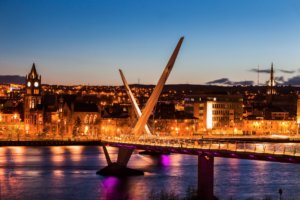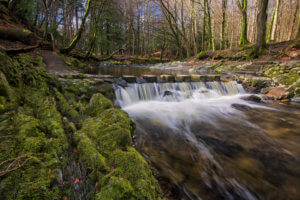Northern Ireland’s rugged and magnificent coastline often gets all the love, but have you been to County Fermanagh, an oasis of bucolic countryside interspersed with incredible waterways and serene lakes?
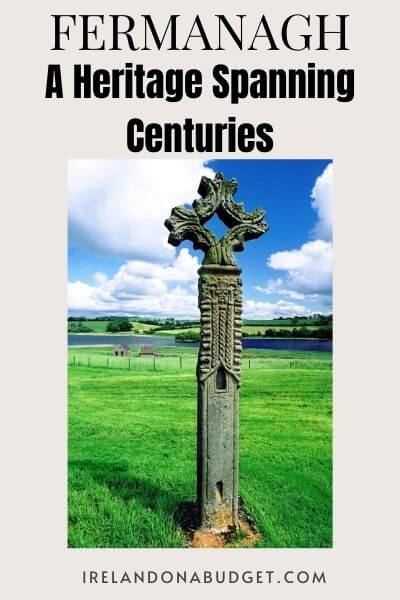 This post and page contain affiliate links and I may earn compensation when you click on the links at no additional cost to you.
This post and page contain affiliate links and I may earn compensation when you click on the links at no additional cost to you.
It is also known for its incredible heritage sites, some of which date from pre-Christian times.
If you're wondering just what is Fermanagh famous for, you'll find some answers on how to discover this jewel of a county below.
If you’re traveling from Belfast, the drive to Fermanagh is about an hour and 30 minutes.
From Dublin, it shouldn’t take more than 2.5 hours and from Galway, the journey is less than 3 hours.
While there’s no coastline here, its many lakes and waterways make up for it (a third of the county is made up of lakeland).
In almost every corner of Fermanagh, you’ll come across water, either from the Upper or Lower Lough Erne or the River Erne that connects them both.
Enniskillen Castle
Located in Fermanagh’s county town, Enniskillen, this notable castle has indeed a storied history.
The first castle built on this site was in 1428 on the orders of Hugh Maguire, who served as Lord of Fermanagh during the reign of Queen Elizabeth I.
He was also the leader of the ancient Maguire clan.
It was remodeled in the early 1600s but was under British control at that point.

The castle was fortified even more in the late 1700s against an attack from the French.
It now houses two fascinating museums that display the history of the region from prehistoric to modern times.
They include the Fermanagh County Museum and the regimental museum of the Royal Inniskilling Fusiliers and the 5th Royal Inniskilling Dragoon Guards.
Booking.com
Devenish Island
Located on Lower Lough Erne, this small island contains one of the finest monastic sites in Northern Ireland, an important center of scholarship in this part of the island of Ireland.
The Devenish Island monastic settlement was founded by St. Molaise in the 6th century and includes a round tower and the walls of the Oratory of Saint Molaise, including St. Molaise’s House, which is basically a small church.
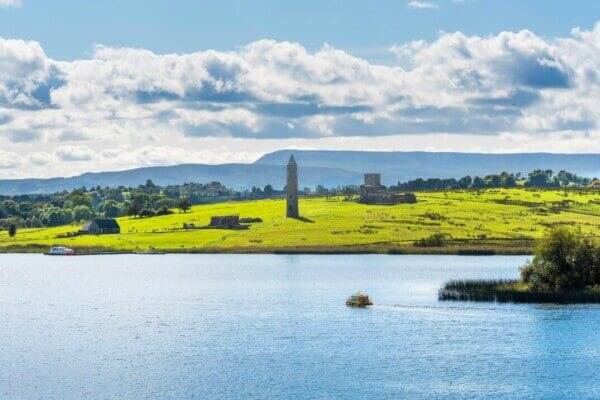
You can climb to the top of the 100-foot (30-meter) round tower thanks to internal ladders.
Under its conical stone roof, you’ll see beautiful sculptured Romanesque ornamental features common in the 12th century, when it was constructed.
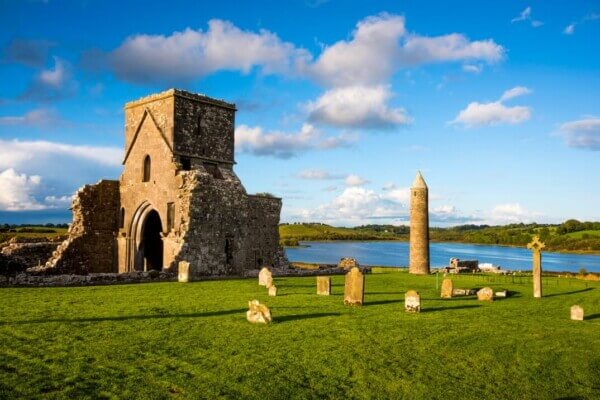
There are two other churches that are part of the monastic settlement, which was raided by the Vikings in 837 and burned three centuries later in 1157.
St. Mary’s Augustinian Priory is located on a hill nearby.
The church, tower, and small north cloister that make up those remains date from about the mid-15th/early 16th-centuries.
You can get a ferry to Devenish Island from the Enniskillen Castle Museum jetty thanks to the Erne Water Taxi.
Cuilcagh Mountain Park
The meandering boardwalk formally called the Legnabrocky Trail but locally known as the Stairway to Heaven is the most popular part of this mountain park.
The park straddles the border between Counties Fermanagh and Cavan and is the highest point in both counties.
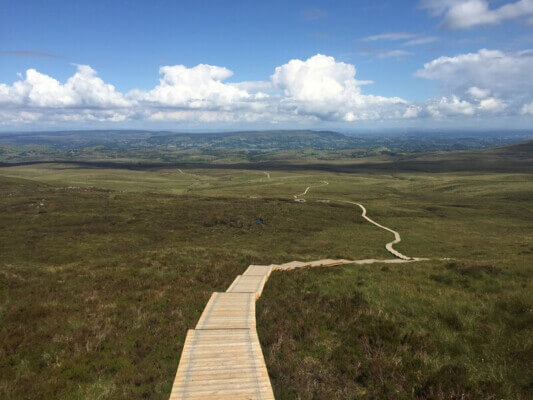
The path zigzags its way through bogland and can be steep at times before reaching the wooden staircase near the top, where you’ll get fantastic views of the surrounding countryside.
The 15-km linear walk starts at the Marble Arch Caves and will take you about 5 hours to complete.
If you are in good physical shape, this is well worth doing.
However, you should be well prepared before setting out and wear warm clothing, suitable footwear, as well as having food, water, a map, and a mobile phone if you get into difficulty.
Because of its popularity, the trail has been a victim of its own success. Walkers are asked to tread lightly and be respectful of this pristine environment.
Marble Arch Caves
Considered one of Europe’s finest show caves, the Marble Arch Caves near the small village of Florencecourt consists of a series of natural limestone caves that were formed from three rivers draining off the nearby slopes of the Cuilcagh Mountain.
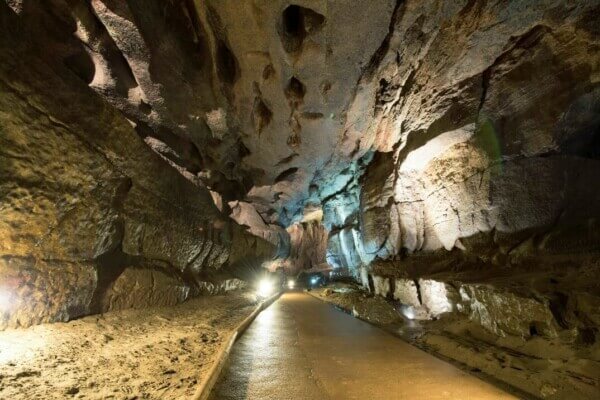
On a tour of the caves, you’ll not only get to see the amazing subterranean rivers, winding passages, and lofty chambers that are part of this 7-mile (11.5 km) cave system, you’ll also learn about the early explorers in 1895 who dared to go into the darkness.
The caves are part of an amazing UNESCO global geopark that was formed millions of years ago and has resulted in a natural environment that is rich with valleys, lakes, and drumlins.
The uplands portion of the geopark contains forest, blanket bog, and a karst landscape that formed the caves.
Sixty-minute guided tours of the caves are scheduled throughout the day. Tours begin at the visitor center. Be sure to arrive 30 minutes prior to the tour start time.
Boa Island
Step in time to pagan Ireland at Boa Island situated on the north shore of Lower Lough Erne.
It is the largest island on Lough Erne, which boasts about 150 little islands, along with many coves and inlets.
Two unique stone carvings can be found here, both located in the Caldragh Cemetery, which dates from 400 to 800 A.D.
They include the Boa Island figure and the Lustymore Island figure.
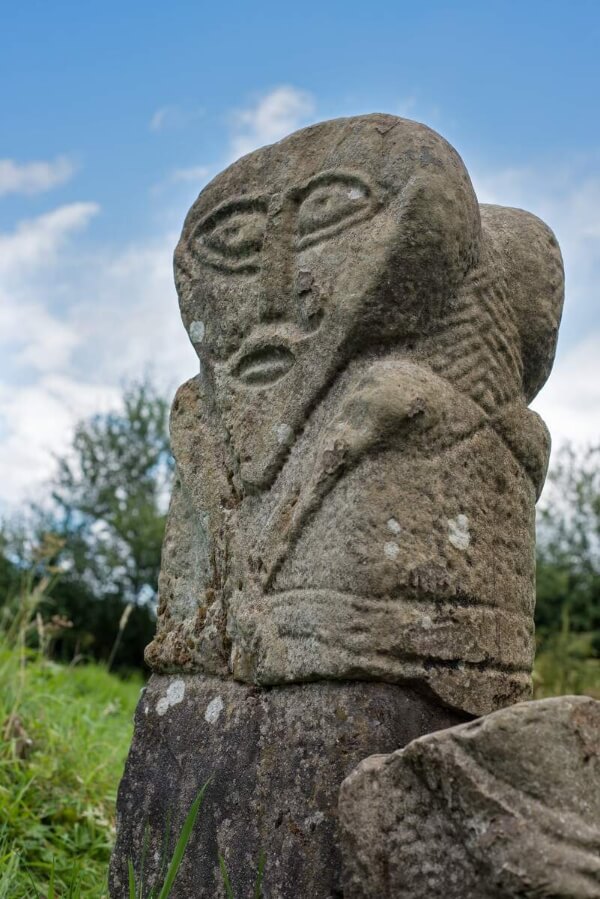
The larger Boa Island figure is considered to be the most mysterious and remarkable stone figure on the island of Ireland.
It is known as a Janus figure because it has two faces (similar to the Roman two-headed deity Janus). Experts believe that this one represents a Celtic goddess.
The Nobel prize-winning poet Seamus Heaney referred to this figure in his poem, “January God.”
This part of Fermanagh is rich in such sites, with nearby White Island (about 3 miles/5 km away) being the location for another primitive set of early Christian figures.
National Trust Properties
There are three tourist attractions owned and managed by the National Trust in Co. Fermanagh alone. They include the following:
Florence Court & Estate
Florence Court is one of County Fermanagh’s finest buildings.
The Georgian mansion was the home of the Cole family (the Earls of Enniskillen) who built the house in several stages over three generations.
The house, which was used to shoot scenes for the movie, “Miss Julie” starring Jessica Chastain and Colin Farrell, contains a fascinating collection of Irish furniture and boasts the finest Rococo plasterwork in Ireland.
The expansive Pleasure Garden is not to be missed during a visit to Florence Court.
Landscaped in the mid-19th century, it contains a variety of Victorian specimen trees as well as temperate and semi-tropical plants.
At the top of the Pleasure Garden is a reconstructed 18th-century thatched summer cottage.
Be sure to look for The Florence Court Yew, reputed to be the “parent” of all Irish yew trees found throughout the world.
This particular specimen is the survivor of two original Irish yew saplings discovered in 1767 by a local farmer.
Discover the story of the Florence Court Yew in the video below.
Castle Coole
An even grander mansion than Florence Court is Castle Coole.
Built between 1789 and 1797, it served as a summer retreat for the First Earl of Belmore, who at the time was living in Dublin.
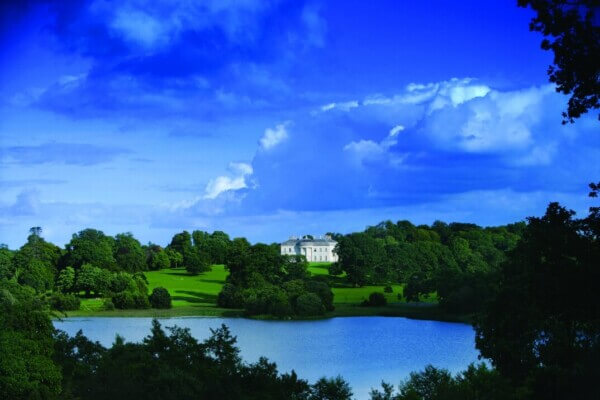
The wealthy heir of 70,000 acres of Irish land reportedly spent £57,000 on its construction, about £20 million today.
By the turn of the century, when the Act of Union was passed essentially getting rid of the parliament offices in Dublin, the Earl and his family moved permanently to County Fermanagh.
Among the notable rooms in the house is the state bedroom.
In 1821, King George IV planned to stay overnight at Castle Coole during his official visit to Ireland but he failed to show up.
Rumor had it that spent the night at Slane Castle in Co. Meath with his Irish mistress, Elizabeth Lady Conyngham.
The room retains its original furnishings, including state bed and wallpaper.
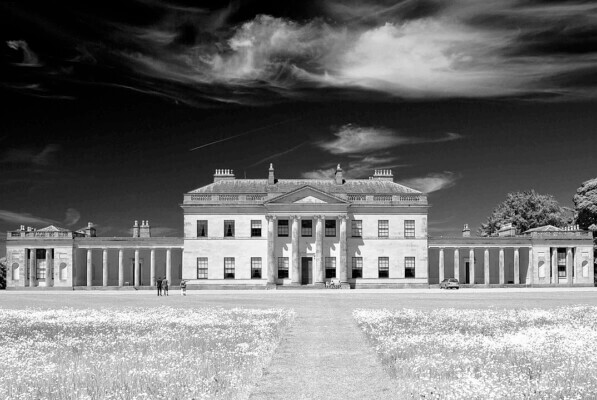
Other notable features of the house include a drawing-room furnished in the French Empire style, a Grecian staircase hall and a ladies’ workroom furnished in a Chinese style.
There is an extensive basement, which is also open to the public.
It contains kitchens, a servants’ hall, larders, wine cellars, and a laundry room, as well as a Roman-style plunge bath, a brewery, and offices.
There is a lot more to see at this extensive estate, including trails that lead to nearby Lough Coole.
Admission is £4 for adults, £2 for children, and £10 for a family ticket.
The Crom Estate
Located on the shores of Upper Lough Erne, the Crom Estate consist of 1,350 acres of land.
The estate includes the ruins of the old Crom Castle, which was built by a Scottish Planter at the beginning of the 17th century. It survived two Jacobite sieges before being burned in 1764 due to a domestic fire.
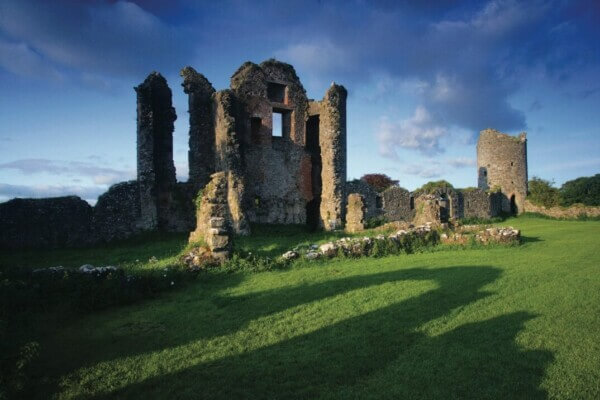
Close to the ruins are two ancient yew trees. Some say they are 800 years old. The last known reference to them is from 1739.
In 1840, a new neo-Tudor, much grander Crom Castle was built by the Earl of Erne and given to the National Trust in 1987.
It is not open to the public.
Feel free to explore the estate, though.
There are a number of woodlands walks on the estate and plenty of wildlife to admire, including, if you’re lucky, the chance to see the estate’s cattle swim across a 100-meter (328 feet) section of Lough Erne to their summer grazing destination.
Spend a Night or Two in the Crom Glamping Pods
Have you been to County Fermanagh? Let me know in the comments below.


